The marketing challenges small businesses face are often different to those encountered by larger, more established companies.
Resource limitations mean you need to get creative and stay efficient to tackle these challenges effectively.
Let’s find out exactly how to do that.
1. Limited Budget
Small businesses often operate within tight financial constraints. Which makes it challenging to compete with larger companies with deeper pockets.
This constraint can lead to missed opportunities and slower growth.
But a small budget doesn’t mean you can’t market effectively.
It just means you need to be more strategic about where and how you allocate your funds. And take advantage of ways to achieve your marketing goals for free.
How to Maximize Your Marketing Budget as a Small Business
First, focus on low-cost, high-impact marketing tactics.
For example, social media platforms offer a free avenue to reach a broad audience.

Building up a following and engaging with your audience is an excellent way to build brand awareness. And you can drive engaged traffic to your business’s website, too.
And content marketing, like blogging and implementing SEO, can generate organic (unpaid) traffic to your website with minimal financial investment.
You can also use digital marketing tools to streamline your efforts at low cost. Helping you automate processes, saving time and money.
For example, let’s say you want to go the social media route. Semrush Social lets you quickly and easily schedule posts to major platforms like Facebook, Instagram, and LinkedIn, all in one place.
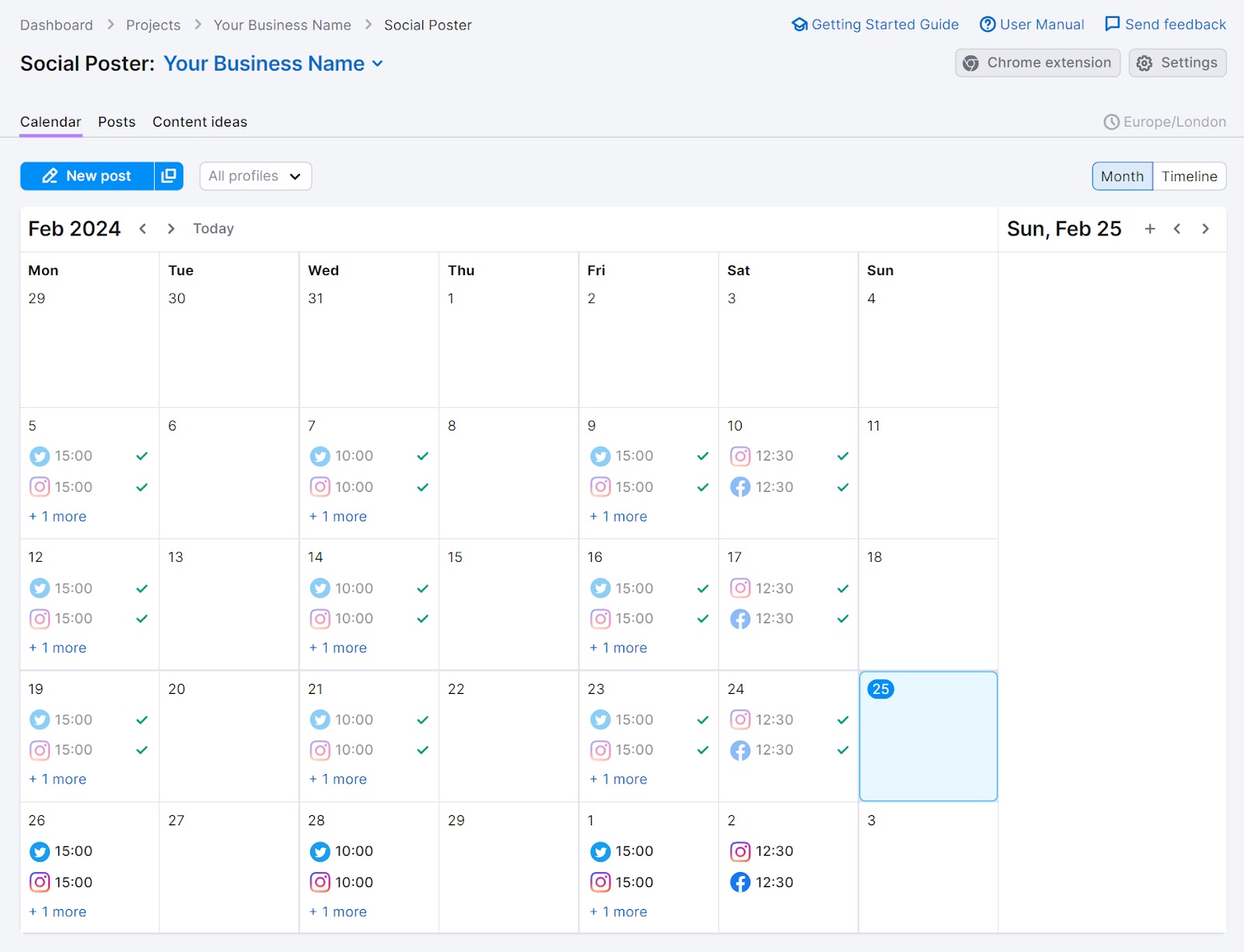
And if you want to produce optimized blog content, Semrush’s suite of content marketing and SEO tools provides insights to help you create data-driven marketing campaigns.
Like the Keyword Magic Tool, which generates keyword ideas and provides you with helpful metrics like difficulty, search volume, and search intent.
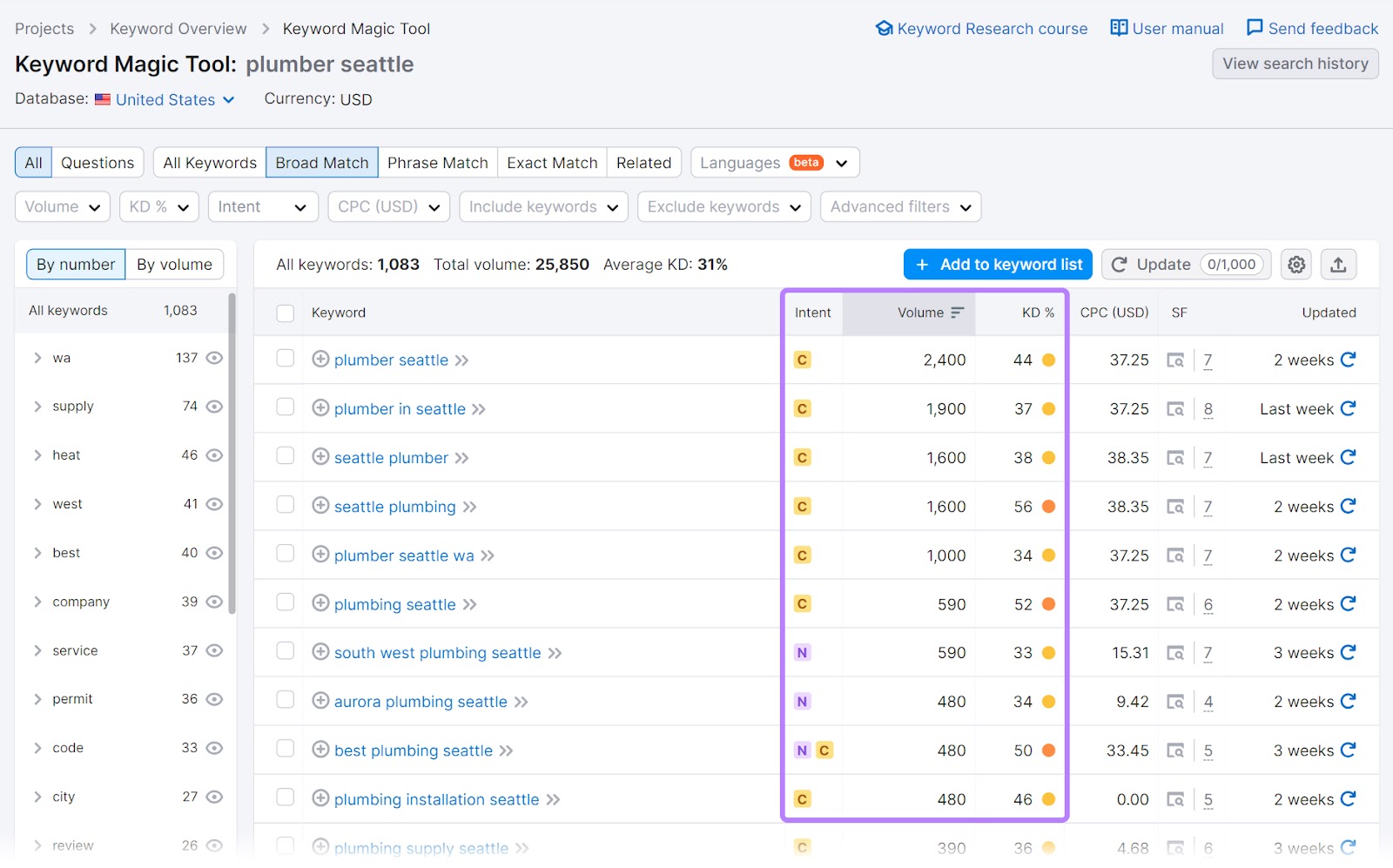
Try out Keyword Magic along with many other useful tools with a Semrush free trial.
2. Lack of a Marketing Plan
Many small businesses hit a wall with marketing not because they lack ideas. But because they lack a structured plan to implement them.
Without a clear marketing plan, efforts can be inconsistent, resources may be wasted, and opportunities are often missed.
How to Create a Marketing Plan for a Small Business
A successful marketing plan for a small business might include:
- Goals and key performance indicators (KPIs): Discussion of your marketing goals and how you’ll track your progress toward them
- Target audience overview: Target audience demographics, socioeconomics, and behaviors (see the next section to learn how to find this information)
- Competitor analysis: Information about your key competitors and their successful marketing strategies
- SWOT analysis: Analysis of your business’s strengths and weaknesses, along with opportunities and threats
- Marketing channels, strategies, and tactics: Outline of where and how you plan to implement your marketing campaigns (jump to this section to find out where to focus your efforts)
You can create a more detailed marketing plan, including more information about your business, team, and everyone’s roles. This is useful if you need to present your marketing plan to key stakeholders.
But covering the basics outlined above helps ensure everyone involved understands your goals, why you’ve set them, and how you plan to achieve them.
3. Finding Your Target Audience
Many small businesses cast too wide a net when identifying their target audience. And they fail to focus on those most likely to convert into customers.
Understanding your target audience ensures your marketing efforts resonate with them and yield better results. Helping maximize your marketing budget.
How to Identify Your Small Business’s Target Audience
One of the best ways to find your target audience is to research your competitors’ audiences. Because you likely target the same or similar people.
To do this, open One2Target, and enter up to five competitor domains. Then click “Analyze.”
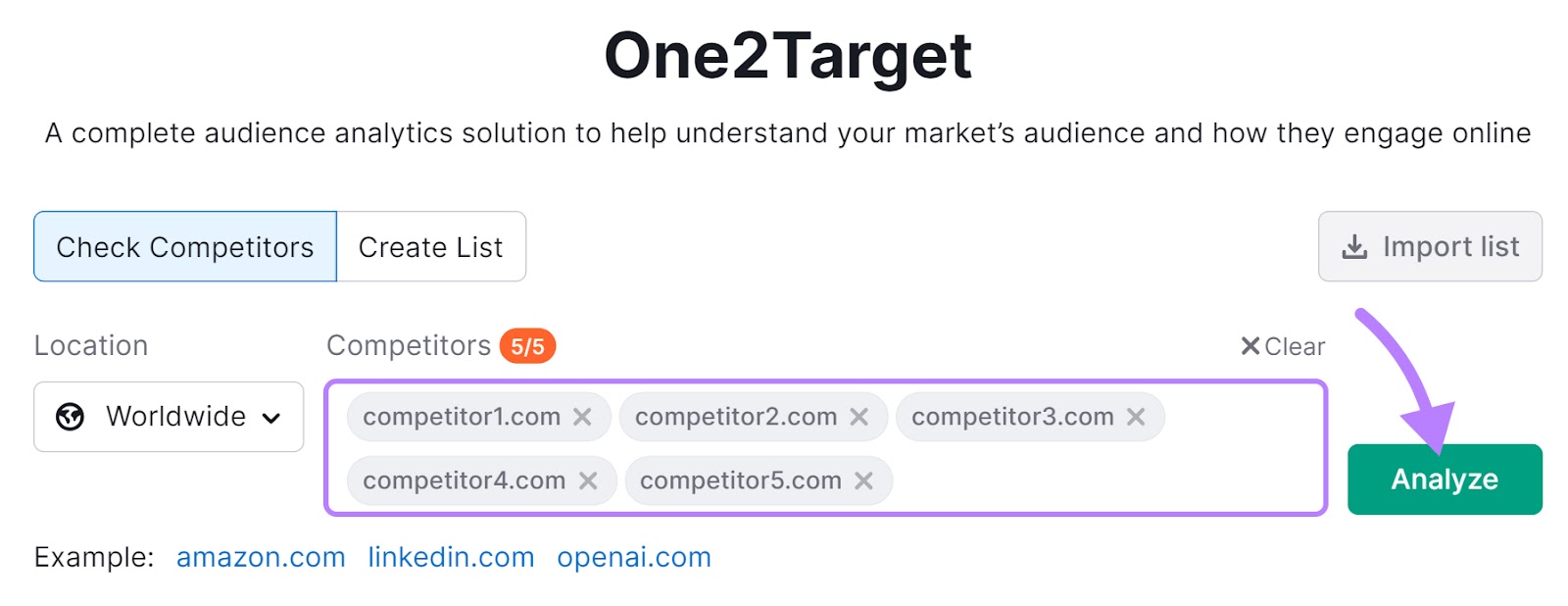
You’ll get information about each competitor’s audience’s age, sex, and distribution by country on the “Demographics” tab. You’ll also see information about each website’s unique visitors.
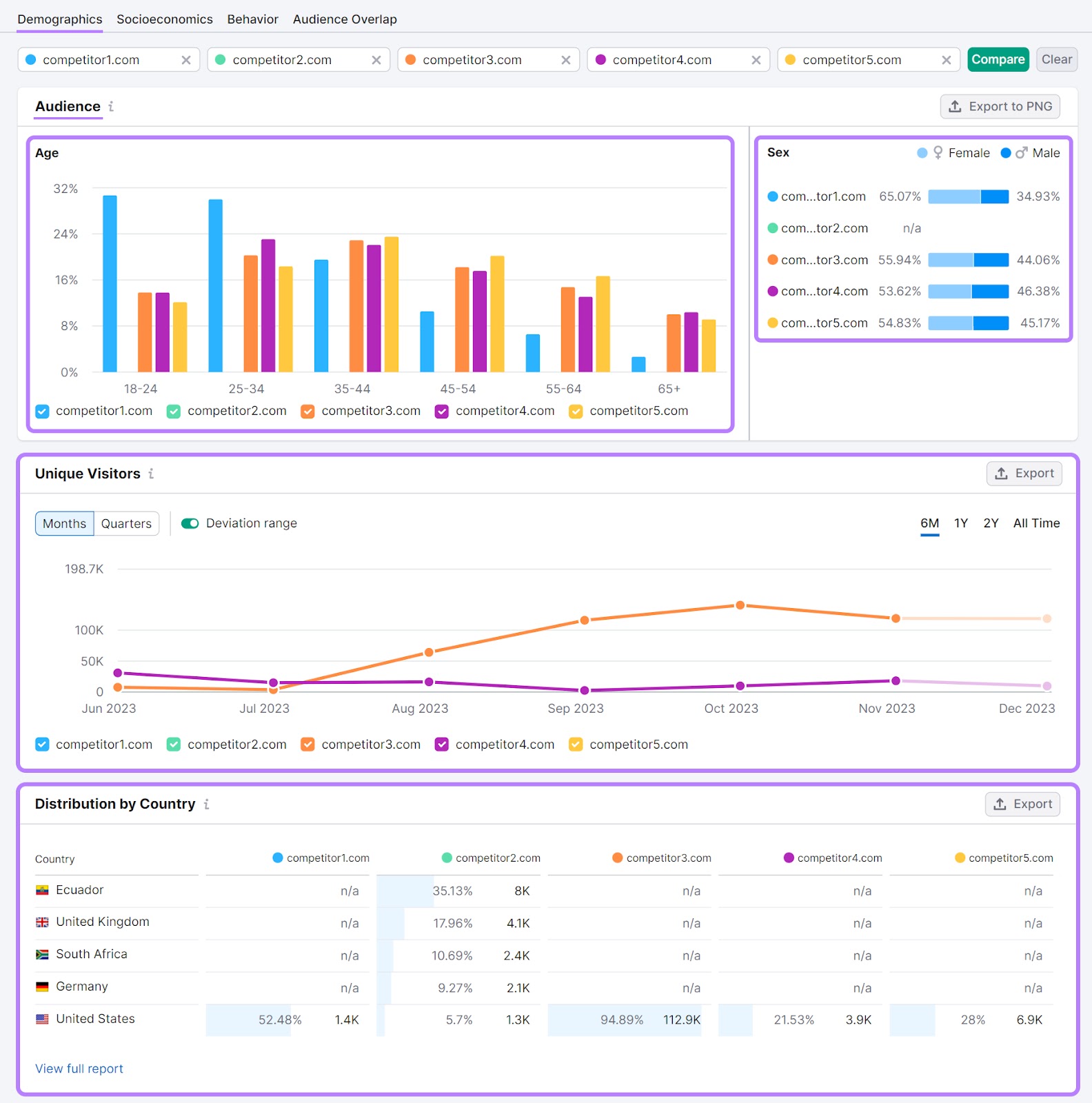
Clicking the “Socioeconomics” tab shows you data like household size and employment status, along with income and education levels.
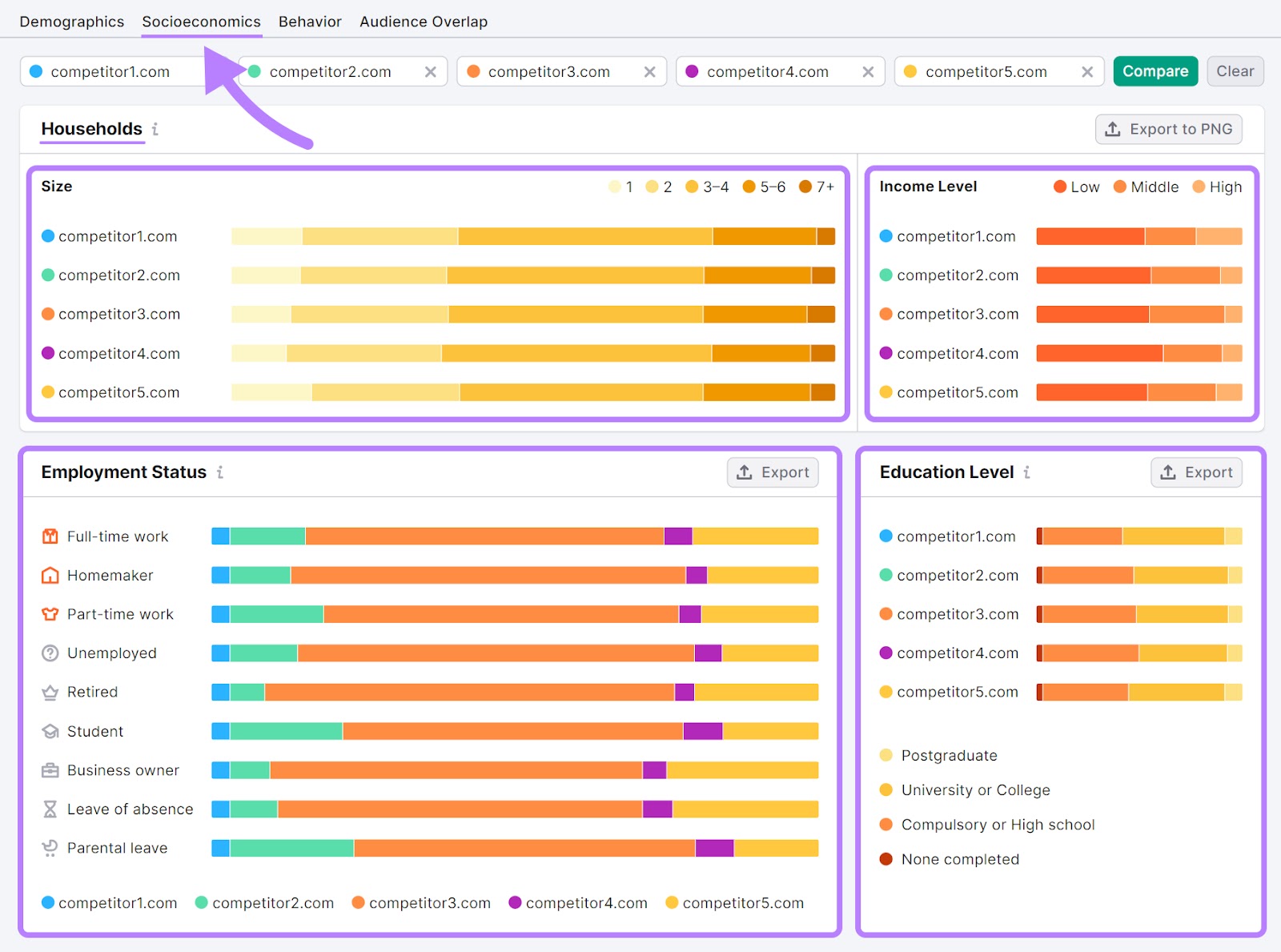
Use these insights to tailor your marketing to the right people.
For example, if your competitors’ audiences tend to be in the 25-34 age range and are primarily in full-time employment, you can use this data to create targeted paid advertising campaigns.
This helps you maximize your marketing budget by only targeting people that are likely to buy your products or services.
4. Deciding Where to Focus Your Efforts
While small businesses often have smaller budgets to start with, they also typically struggle to know where to focus these resources for maximum return on investment.
They might feel unsure whether to dive into social media, invest in content marketing, or spend time learning SEO.
Knowing where to invest is critical to ensure you’re making the most of your limited resources.
How to Know Where to Focus Your Marketing Resources
One way to overcome this marketing challenge is to identify where your target audience is most active. And focus your efforts there.
Sticking with the One2Target tool we discussed above, head to the “Behavior” tab.
You’ll see your competitors’ audience's most visited social media platforms and top interests. Along with the devices they’re most likely to use to visit these websites.
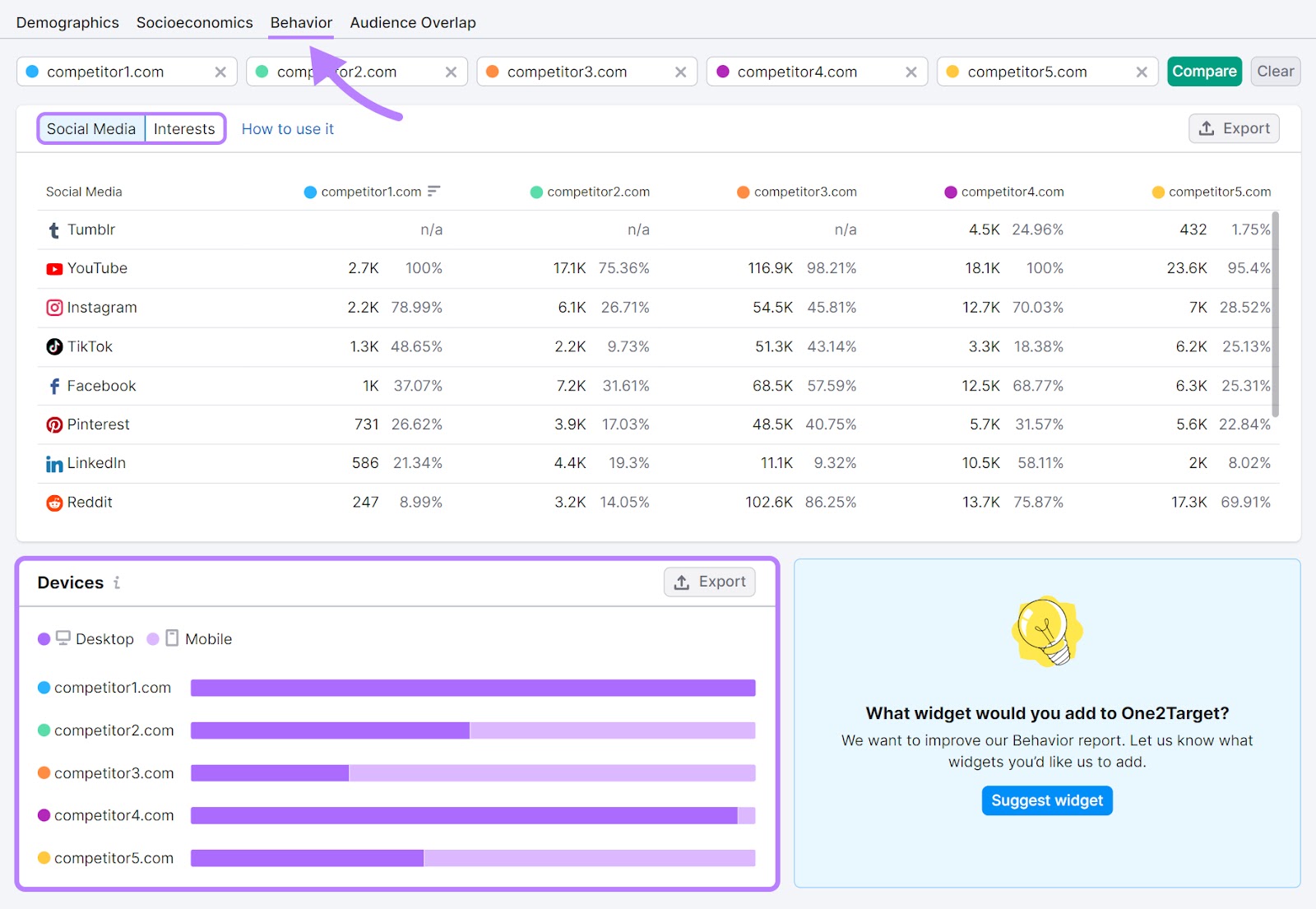
If the audience is most interested in Facebook, for example, you might want to focus on creating engaging social media content for that platform.
You can also use Traffic Analytics to see which channels drive the most traffic to your competitors.
Add up to five competitors and click “Analyze.” You’ll be taken to the “Overview” tab by default, so just scroll down to the “Traffic Channels” widget.
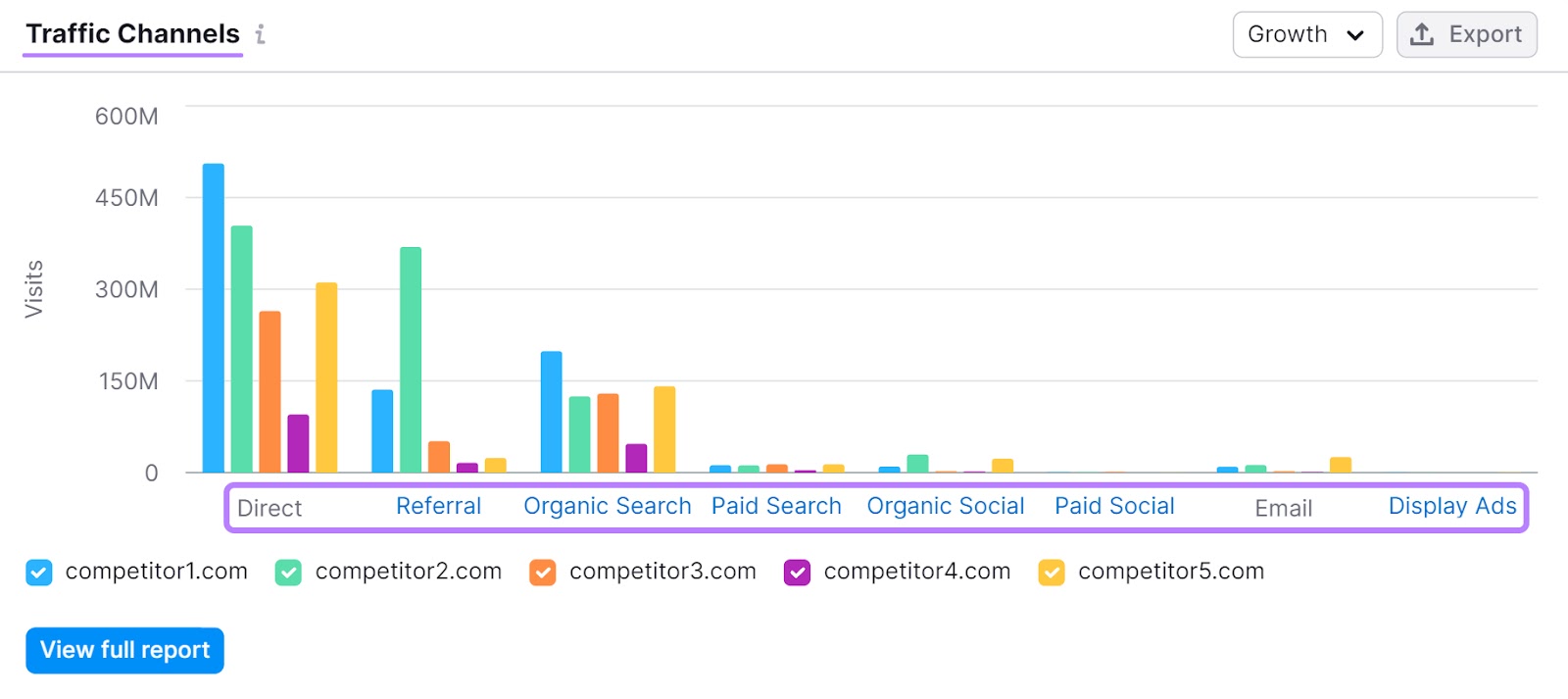
Analyze which channels drive the most traffic to your competitors. And consider focusing your marketing efforts there.
For example, if you see “Organic Search” drives the most traffic, you might want to boost your SEO efforts.
5. Difficulty Producing Enough Content
For small businesses, creating high-quality content on a consistent basis can be both daunting and logistically difficult.
It’s a common bottleneck that can stall your marketing momentum. And limit your potential return on investment.
How to Produce More High-Quality Content
If you’re having trouble producing enough content, developing a content calendar can help.
Planning your content in advance helps you stay organized and publish regularly.
Here’s an example of what a content calendar looks like:
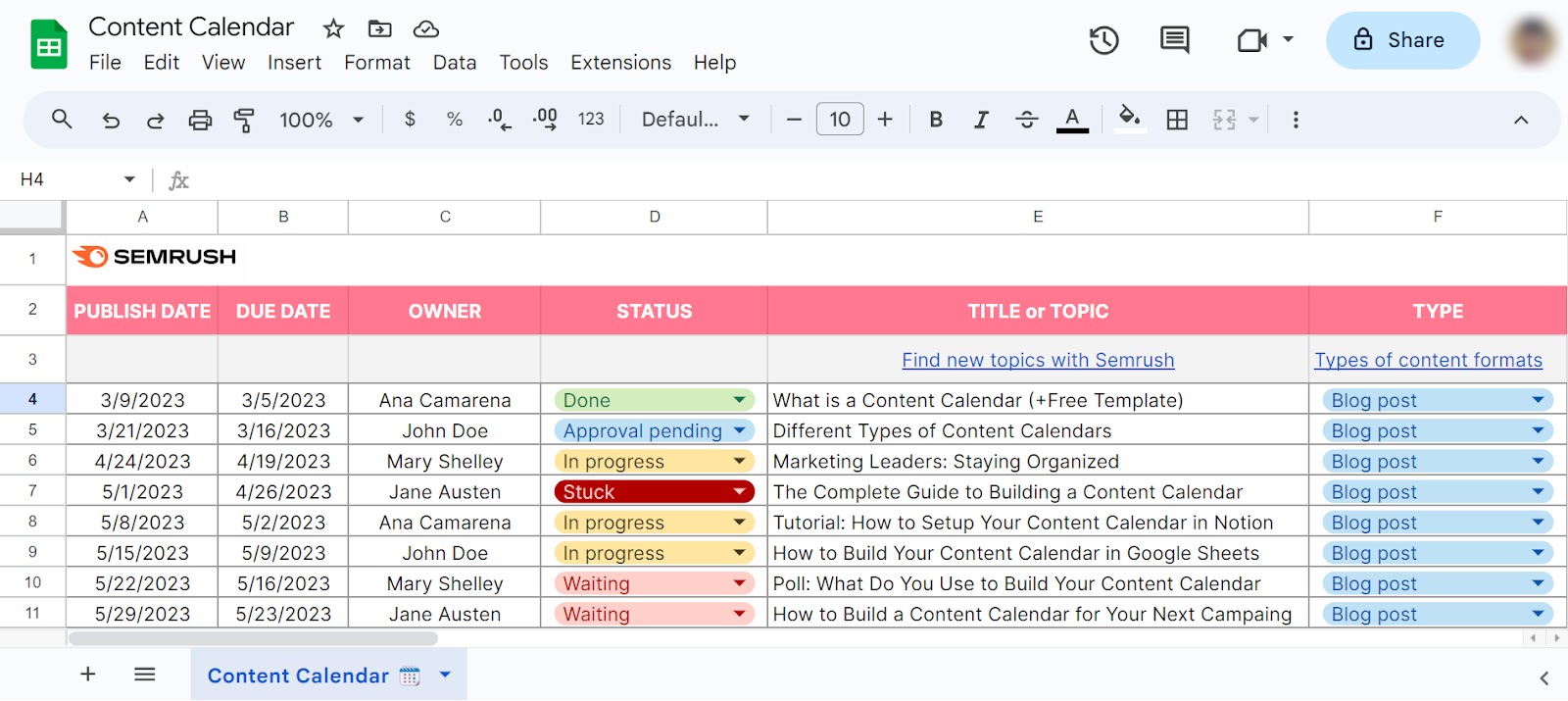
You can also repurpose content you already have.
For example, you can turn a blog post into a video. Or an infographic to share on social media.
This is a cost-effective way to create more content. Making it ideal for small businesses with limited resources.
6. Difficulty Generating Leads or Conversions
Generating leads and driving conversions are two of the most important capabilities of any successful business. But these are things many small businesses struggle to do.
Finding and engaging with potential customers is tough on its own, especially with limited resources at your disposal.
But converting those leads into buyers is even harder—and essential for the growth of your business.
How to Drive More Conversions with Your Marketing Efforts
If your goal is to drive leads rather than make immediate sales, you can use lead generation ads.
These are online ads designed specifically to generate leads. You can then convert these leads into customers through another channel, such as by phone or via email.
Many advertising platforms allow you to create ads specifically for lead generation. Such as Google Ads:
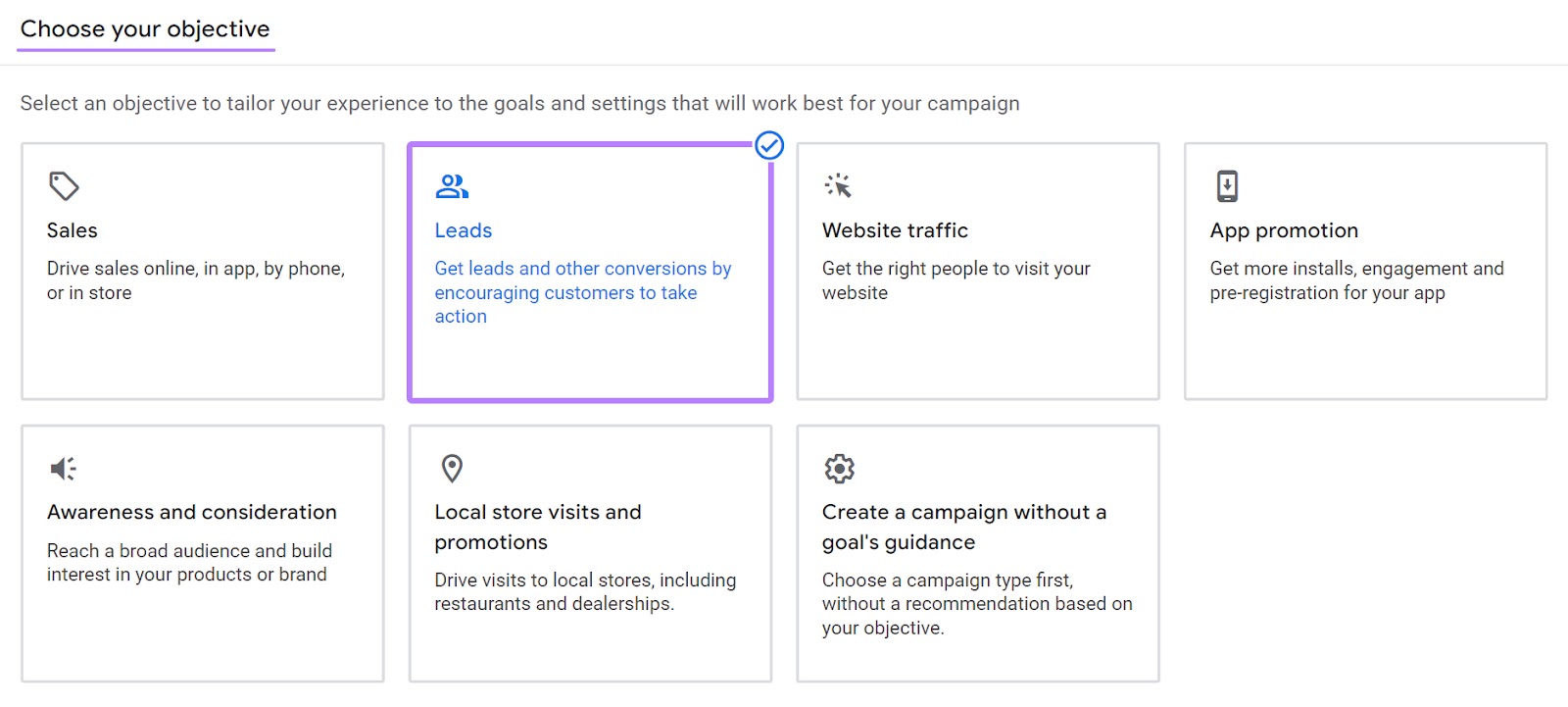
You can then optimize your ad copy and landing pages to get visitors to enter their email or phone number. This can be particularly useful for small businesses in their early stages that may not have many customers yet.
If you want to convert your visitors into customers, you need to optimize your website to both attract visitors and make them want to take action.
To start, make sure your website is user-friendly, mobile-responsive, and has clear CTAs (calls to action).
Here are some quick tips for creating optimized CTAs that drive conversions:
- Keep them consistent: Asking your visitors to take too many different actions can lead to them taking no action at all. So try to stick to one preferred action on each page, like signing up to an email list or adding an item to their cart.
- Place them strategically: Consider placing your CTA near an image of the product. Or alongside positive reviews or testimonials to emphasize credibility.
- Make them stand out: Use high levels of contrast to make your CTAs stand out on the page. And be sure to use clear fonts of an appropriate size for each device type.
Further reading: 30 Attention-Grabbing Call to Action Examples
7. Measuring Your Marketing Success
Gauging the effectiveness of your marketing efforts is essential to understand whether you’re investing in the right areas.
But as is a common theme with all of these marketing challenges small businesses face, limitations on staff, time, and other resources can make it tough to accurately and efficiently measure your efforts.
Without clear metrics to track and the means to track them, it’s hard to know if your strategies are paying off.
How to Monitor Your Marketing Performance as a Small Business
First, go back to your marketing plan. Think about the goals you set and the metrics you established to gauge success. These could be metrics like organic traffic, leads generated per month, or a target conversion rate.
Then, put the right processes and tools in place to track these key metrics.
For example, if your marketing goal is to drive more organic traffic to your website, use a tool like Google Analytics. Go to the property you want to analyze and click “Reports” > “Acquisition” > “Traffic acquisition.”
You’ll see a graph of your primary traffic sources, along with a table breaking this down further with other metrics. Like average engagement time and conversions.
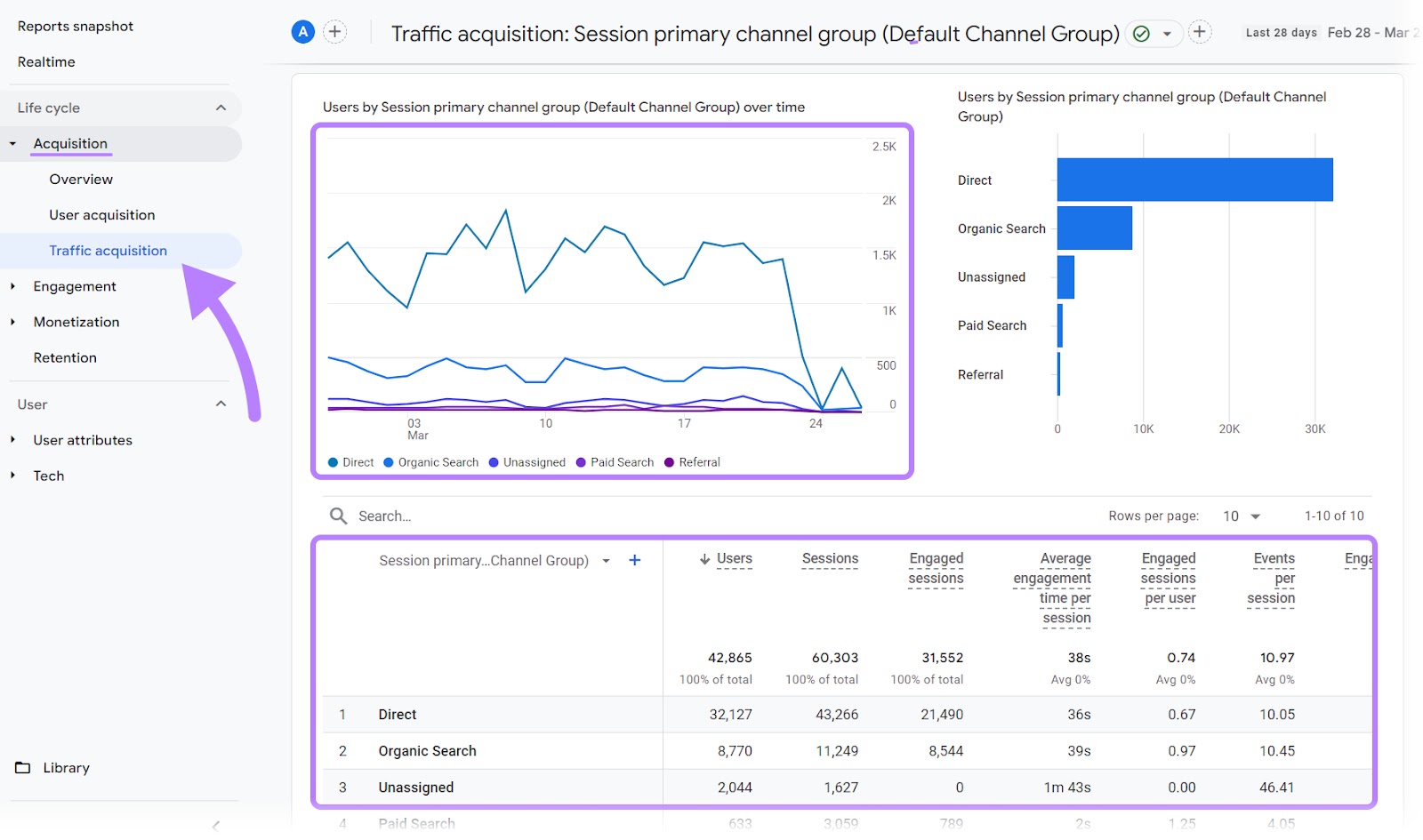
Another useful tool for tracking various marketing metrics as a small business is Semrush’s Listing Management tool. The tool can help you understand where your business is listed, and if you have any issues with those listings.
But you can also track your local rankings. Which is especially useful for businesses looking to drive traffic through local SEO.
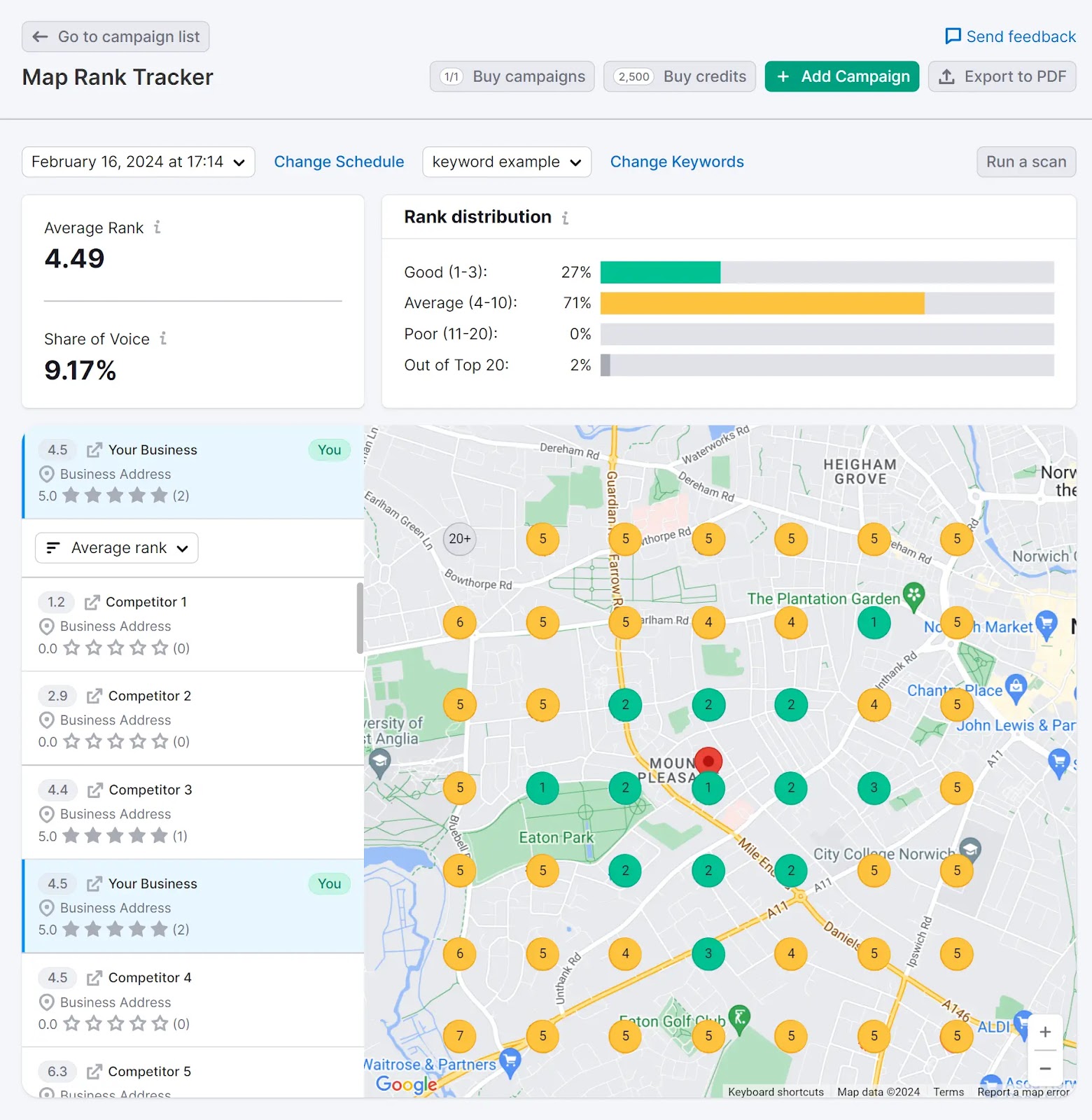
Another useful marketing metric to track is the number of reviews you get. Positive reviews are great for building trust with potential customers. And they can impact your conversion rate.
With the Listing Management tool, you can monitor reviews across all of your business’s locations. And you can even reply to these reviews without leaving the tool.
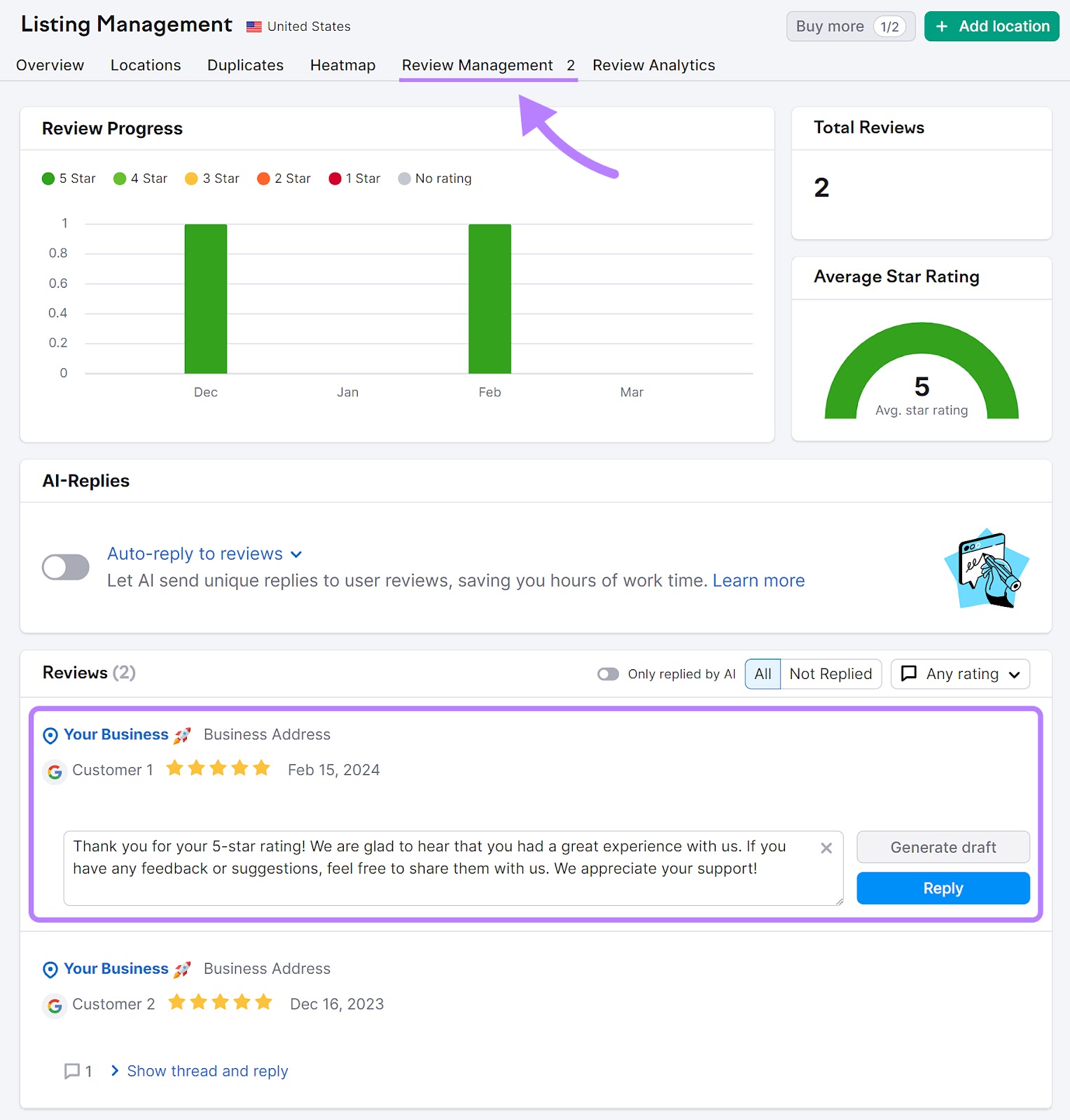
Overcome Small Business Marketing Challenges with the Right Tools
Using the right tools can simplify your marketing efforts. And make them more effective.
But not all are made for small businesses.
Look for cost-effective and easy-to-use options that can streamline key tasks that often require more resources. Like social media management and content marketing.
With a free Semrush account, you get limited access to a wide range of powerful digital marketing tools.
Plus, you can explore the Semrush App Center for additional tools that cover an even wider range of small business marketing needs.
Or try a free trial of a Pro or Guru plan for access to even more useful features.
